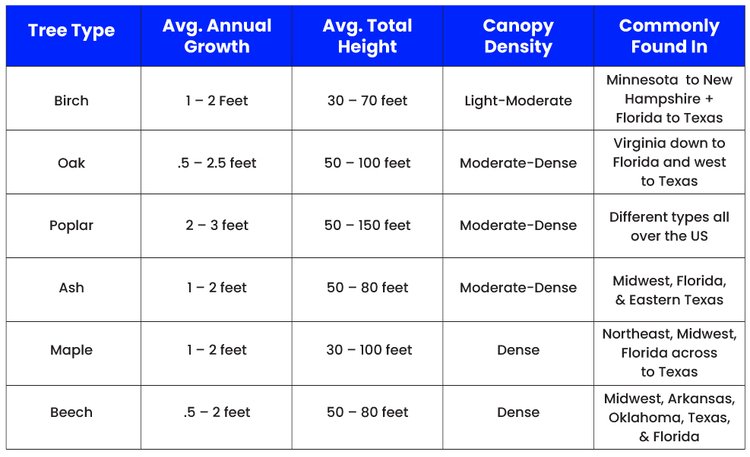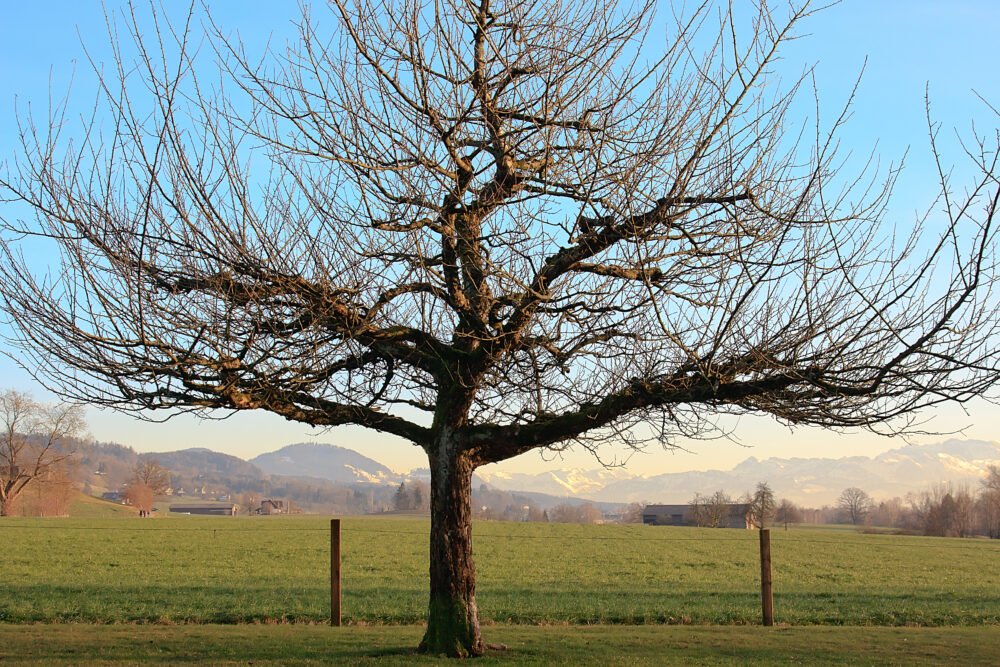Courtesy Of Advanced Tree Care Inc
Many advocates for solar cite environmental reasons as a key motivation for installing an array. However, tree and vegetation management is a core part of maximizing solar production.
In particular, dormant deciduous trees–species that lose their leaves seasonally–cause interesting challenges for solar contractors in both production and shade estimates. This issue happens all over the United States, but primarily in the Northeast, down the Eastern seaboard, the Pacific Northwest, and in the Midwest.
This article looks more in-depth at which dormant deciduous tree factors impact solar projects and how to manage them as a contractor.
The key factors of dormant deciduous trees from a solar perspective
When it comes to solar projects (including production estimates and shade analysis), three key factors stand out:
-
Tree height and location: If a tree gets taller than your house in areas where you want to place a solar array, the canopy will cause shading issues.
-
Canopy density: Some dormant deciduous trees are fully dense while others allow dappled sunlight through—both have significant shading implications in the summer.
-
Average annual growth: This is essential for lifetime production estimates.
If you don’t know this information, it will be very hard to accurately predict lifetime production and shading implications or guide homeowner conversations around tree removal.
Common dormant deciduous tree types
There are six primary types of dormant deciduous trees that grow throughout the US and Canada.

Whether a tree is at the bottom or top of the range depends on growing conditions, soil health, and geographic region, among other factors. For example, the same tree might grow much faster in the countryside than in an urban core, but both could still be quite tall.
How to manage dormant deciduous trees in solar projections
Here are some tips to manage dormant deciduous trees if homeowners have them on their property.
-
Managing trees: For young trees, use the high-end of average annual growth rates to identify when a tree’s canopy might shade the roof. For mature or growing trees, use full-height estimates (or known local averages) for lifelong shade analysis.
-
Use fake trees in design: In your design tool, place fake full-height trees to properly model shading implications (if you use Scanifly, this is a standard feature).
-
Leverage drones for precise height measurements: If you’re surveying onsite with a drone, you can capture the height where the roof starts, the pitch, and the top height—this information makes it much easier to estimate how a growing tree might impact production.
-
Consider advising tree removal or replanting: If you’re able to model production with and without trees, you can have a conversation with the homeowner about tree removal. Alternatively, you can discuss replanting younger trees to species that won’t shade the solar array.
“One weird situation is when people seek out solar for environmental reasons but then learn they have to cut down some trees to avoid shading the panels,” said Tim Wachtman, Director of Operations at Capstone Solar, in an interview with Scanifly. “It’s almost a moral conundrum—they want to save the trees and do the right thing by going solar, so they aren’t sure what to do sometimes.”
Every path forward–whether that’s tree removal, replanting, or accepting what’s on the property–requires data to understand the implications and make a decision.
While manual surveying methods might help you capture roof dimensions, they simply can’t collect the information required to analyze the impact of dormant deciduous trees; drones fill that gap. Drones give you accurate roof measurements and capture all site context so you have the insight you need to move the project forward.






